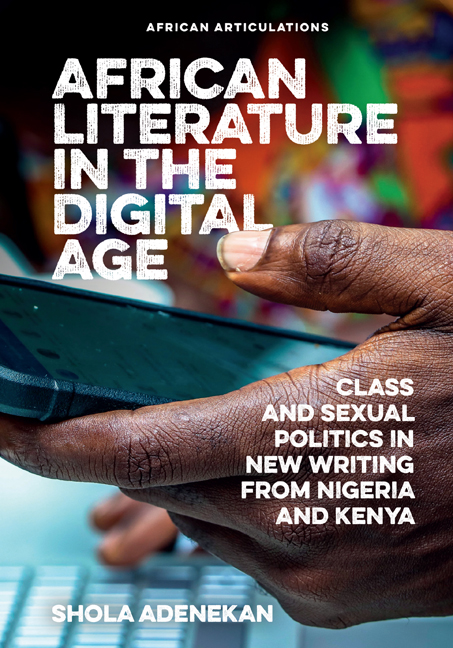 African Literature in the Digital Age
African Literature in the Digital Age In the previous chapters, I showed the ways in which class intersects with every facet of the digital network, but in the next four chapters, I am going to analyse this intersection with sexual politics. In this particular chapter, I use the digital writings of mainly Nigerian and Kenyan queer writers to highlight the notion of the queering of African literature. I will compare their aesthetic strategies with that of the first generation of post-independent African writers, with a focus on Wole Soyinka's The Interpreters and Ama Ata Aidoo's Our Sister Killjoy. I am foregrounding this comparison on the important argument put forward by the Kenyan queer scholar and blogger Keguro Macharia that ‘digital Africa cannot be imagined or theorised without placing digital queer Africa, at its heart’ (2017, 1). Using Black Looks (Blacklooks.org), the queer blog and network set up by the British-Nigerian queer activist Sokari Ekine as his case study, Macharia in ‘Digital Queer Africa’, his presentation at a workshop I co-organised at Amherst College, USA, in October 2017, surmises that instead of deploying mainly European/Caucasian theorists to understand queer Africa in the digital age, we need to think with queer Africans. This is because digital Africa generates its own theory as bloggers like Ekine ‘mapped and created connections across geographies and histories’ (1).
Macharia's observation is apt because if we want to articulate the way in which digital African writing challenges and undermines conventional thinking about history, affect, memory and sexual politics, queer Africans are at the forefront of such movements. There are some key points that I want to emphasise in this chapter that Queer Kenya and Queer Nigeria cannot be theorised without approaching them from a continent-wide perspective because queer African writers do not limit their portrayal to a national boundary. In fact, their texts reject all remnants of the project of colonial modernity, of which the twenty-first century's nation-state is a good example.
To save this book to your Kindle, first ensure [email protected] is added to your Approved Personal Document E-mail List under your Personal Document Settings on the Manage Your Content and Devices page of your Amazon account. Then enter the ‘name’ part of your Kindle email address below. Find out more about saving to your Kindle.
Note you can select to save to either the @free.kindle.com or @kindle.com variations. ‘@free.kindle.com’ emails are free but can only be saved to your device when it is connected to wi-fi. ‘@kindle.com’ emails can be delivered even when you are not connected to wi-fi, but note that service fees apply.
Find out more about the Kindle Personal Document Service.
To save content items to your account, please confirm that you agree to abide by our usage policies. If this is the first time you use this feature, you will be asked to authorise Cambridge Core to connect with your account. Find out more about saving content to Dropbox.
To save content items to your account, please confirm that you agree to abide by our usage policies. If this is the first time you use this feature, you will be asked to authorise Cambridge Core to connect with your account. Find out more about saving content to Google Drive.